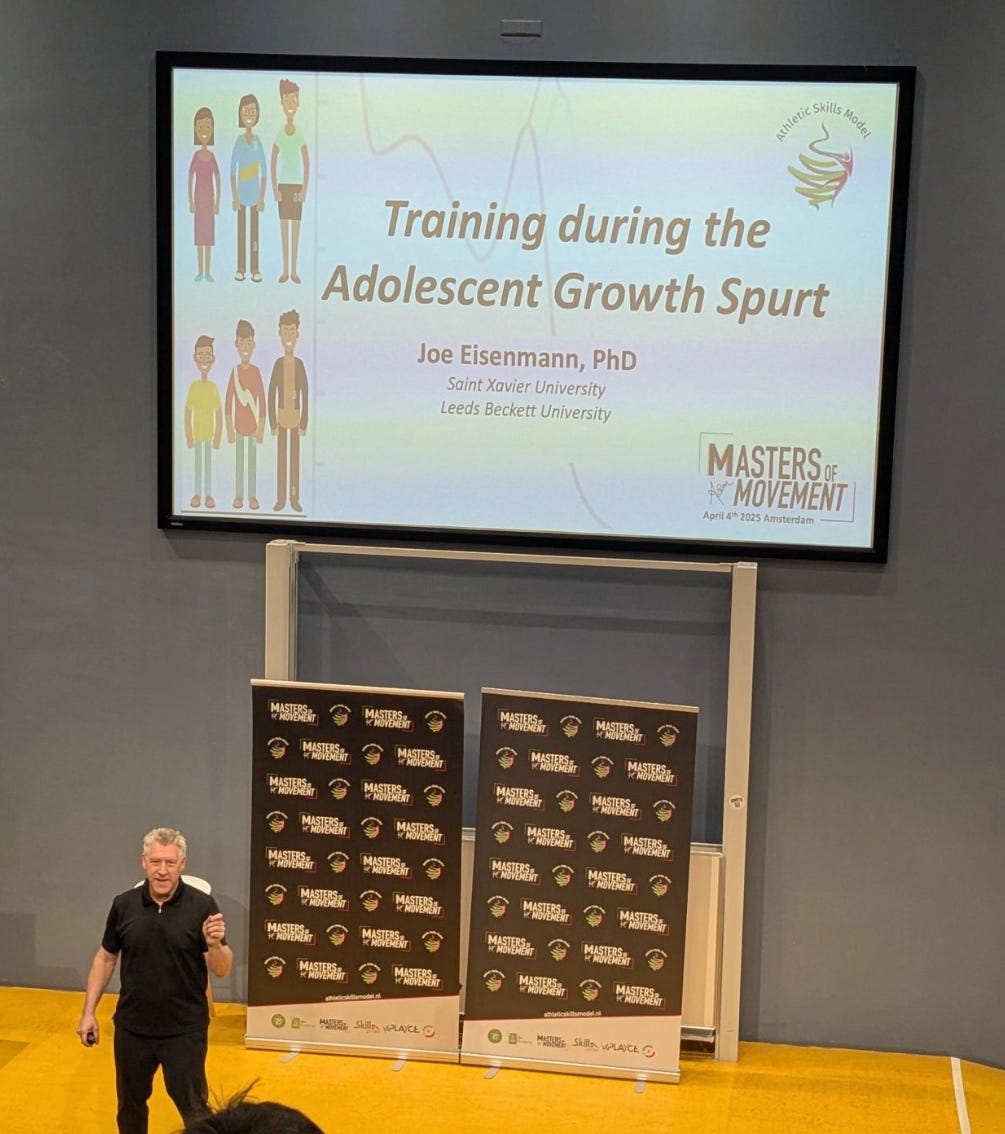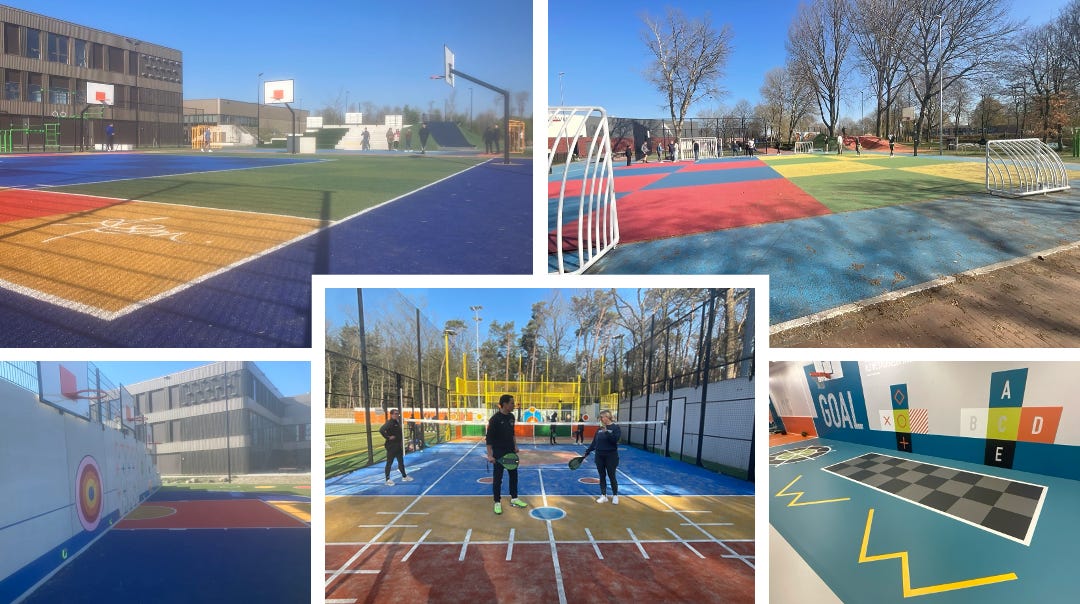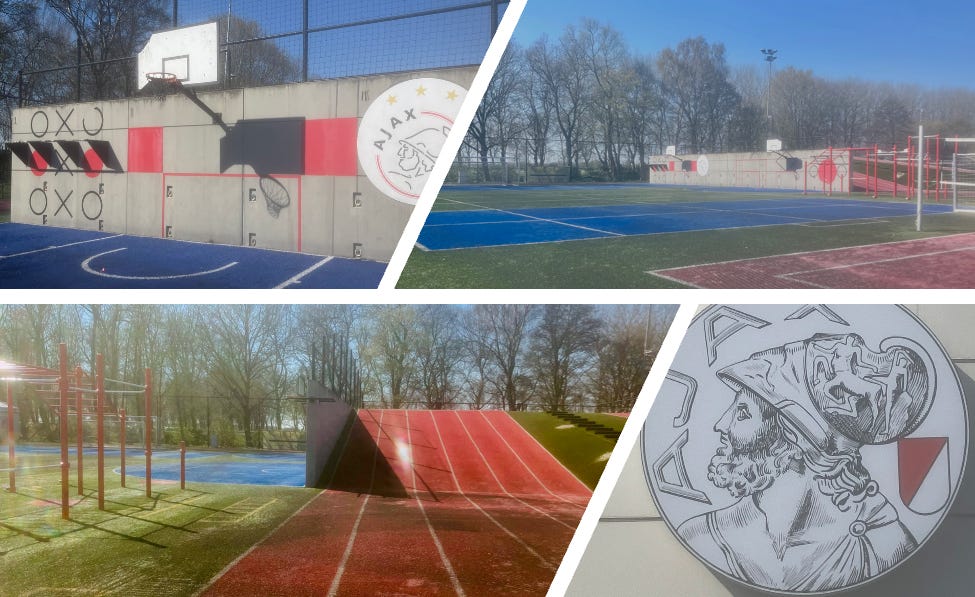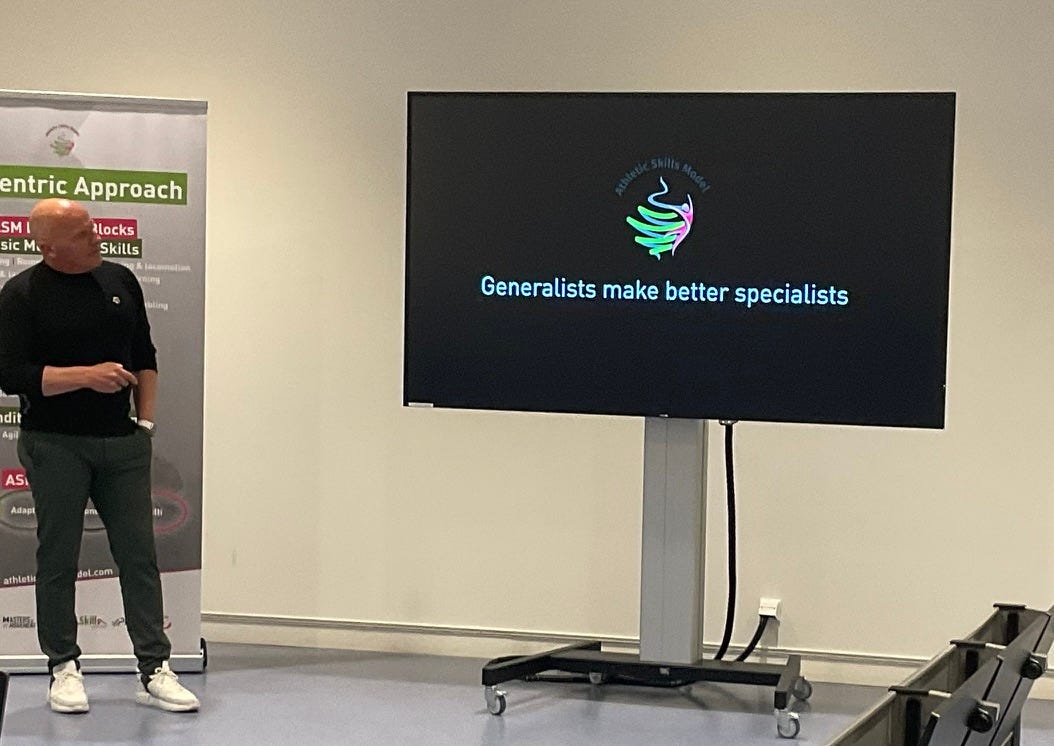Movement Mastery: An Immersive Experience into the Athletic Skills Model
Generalists make better specialists
We have all probably experienced that feeling of reading about or watching a video about something and then actually experiencing it. It truly comes to life.
For example, as a student in exercise science reading about VO₂ max and watching videos of the graded exercise test with the “breathing mask”, then doing it, seeing it, experiencing it, and actually feeling it during a lab. Your understanding of the concept is much deeper after this hands-on, practical lab experience.
Or consider reading a tour book and watching videos about a place, and then actually visiting, and better yet, having a local be your tour guide including side trips to local establishments, inside stories, etc.
Last week, I went from reading the Athletic Skills Model (ASM) book and seeing photos and watching videos of the Skills Garden to being immersed in it.
Those who have followed me on the former Twitter platform perhaps recall numerous tweets about the ASM and then the thread while I was reading the book that led to this blog - The Athletic Skills Model: A Synopsis - in which I wrote “Overall, this book is an inside look into how the Ajax Football academy conducted its world-class youth/long-term athletic development program.”
Well, last week that statement evolved into THE ultimate inside look, where I visited the original Skills Garden at Ajax and learned from the experts who wrote the book.
Here, I just want to share some experiences and thoughts - and hopefully get you to look into the ASM.
The International ASM Course
Last fall, I came across an event held by ASM that caught my attention. As an old guy who has been to a lot of conferences, I must say that it has become pretty much the same-old-same-old ….. you know, sit and listen to same presenters from last years conference talk for 50 minutes, then repeat ……. so I am always looking for unique and fresh learning opportunities.
In my opinion, the best learning opportunities come with a blend of classroom and hands-on practical that tell a logical and progressive story from start to finish. And this was just the case with the ASM event, where participants would travel to see ASM Skills Garden’s, learn about the ASM in the classroom and also practice various aspects of the model.
I bypassed that event last fall but fortunately (and humbly), I was invited to give a keynote lecture on Training during the Adolescent Growth Spurt as part of the closing activities of the ASM International Course held last week. As a learner, I immediately asked if I could join the full course as a pupil as well.
As mentioned above, the curriculum was well-designed and the instruction was exceptional. The mix of other attendees from Japan, Greece, Denmark, France, and Israel and with experiences across the movement science discipline also made for great learning and sharing.
Besides learning first-hand from the dynamic mastermind of the ASM - Rene Wormhoudt - and the Professor - Geert Savelsbergh, two of the authors of the book, the bright and energetic Yordi Vermaat excelled in the classroom and in leading the practical implementation of the ASM, where he demonstrated and coached us through several creative and fun ways to develop versatile movers along the ASM spectrum of specific, adaptive, donor and multi-sport activities.
This is a great course for any practitioner of movement education - strength & conditioning, physical therapy, physical educator, etc. The next course is Oct 29-31 2025 in The Netherlands. Check it out. If you plan to attend, I would encourage reading the book first.
The Hardware: Skills Garden and PLAYCE
Although the software (the curriculum) is important for developing competent and confident movers, it was the hardware of the ASM that originally captured my attention. As you will see below, it involves bright, vibrant, inviting and engaging structures and facilities that are purposefully designed with elements and constraints for developing versatile and adaptable movers. The options are only limited by your creative imagination.
During the course, we traveled to a few locations where ASM has been fully implemented including both indoor and outdoor spaces. Here are some examples.
In addition, I was able to visit the Ajax football club where the original Skills Garden was developed by Rene Wormhoudt, when he was the head of physical performance there.
You might ask - what is the impact of the Skills Garden? Dr. Martina Navarro, a former student of Professor Savelsburgh and current senior lecturer at the University of Portsmouth in the UK, shared some of her research to answer this question. Although these Skills Gardens look a bit similar to any playground, many traditional public play spaces are often underutilized with reports of being empty 75-90% of the time - and even if one spends time at one, it is often for only 15-30 minutes. Results from Navarro’s research grow show a significant increase in utilization and moderate to vigorous physical activity at the Skills Garden.
Learn more about the Skills Garden & PLAYCE
The Software
In the previous blog, I summarized the software of the ASM but will give a very quick overview here. At the core of the ASM are the ten Basic Movement Skills or the Fundamental 10 [Balancing & Falling; Romping & Fighting; Moving & Locomotion; Jumping & Landing; Rolling, Tumbling & Turning; Throwing, Catching, Hitting & Aiming; Climbing & Scrambling; Swinging; Music in Motion] which provide the foundation of being a versatile mover.
All of the Basic Movement Skills are implicitly connected to all of the elements of Coordinative Abilities [adaptability, balance, coupling ability; synchronize, kinetic differentiating ability, spatial orientation, reaction, and rhythm]. The selection of exercises that include the basic movement skills should carefully consider the implementation of the coordinative abilities - and this can be done in fun and creative ways.
A major difference in the American approach to training and the ASM, in my opinion, is the relative focus on Conditions of Movement - or what U.S. would call fitness (agility, flexibility, endurance, power, etc.). Instead of focusing the training session on the improvement of these qualities, the ASM utilizes the basic movement skills performed in concert with the coordinative abilities to enhance the conditions of movement almost as an innocent bystander.
What next?
Read, think, do. I read the book, put some thought into the ideas and concepts, and then learned from the experts first hand and experienced the ASM.
What’s next? Reflect. Re-read, more think, more do. Repeat.
This is my plan to continue understanding the Athletic Skills Model, and how I want to implement it into my teaching of the next generation of movement scientists and practitioners, and also how I want to implement the ASM into my coaching and training of youth movers. The process is iterative.








Preaching to the choir here. Years ago, I got fed up with the sports-industrial complex and the obsession with 'Talent ID by numbers.' I saw how children were forced into stale environments and 'scientists' measured them and asked them to produce numbers which may or may not have led to 'better' performance.
I was lucky to work with a lady called Paula Jardine on a Sport England project developing talent in the South West. I worked with the young people developing their movement skills as best as I could.
I realised I didn't have the skill set (despite an MSc in sports coaching and several S&C certifications). Over the next 10 years I developed my skills by attending formal education in athetics, gymnastics and weightlifting, plus learning from practitioners such as Vern Gambetta, Kelvin Giles, Steve Myrland, Jim Radcliffe, Greg Thompson et al.
I decided to set up my own Athletic Development club in our village, and worked with the council to develop our local parks.
When the focus is on the children, and not the medals/ job- justification/ ego, great things can happen. The hardest part is convincing parents that early-specialisation is problematic.